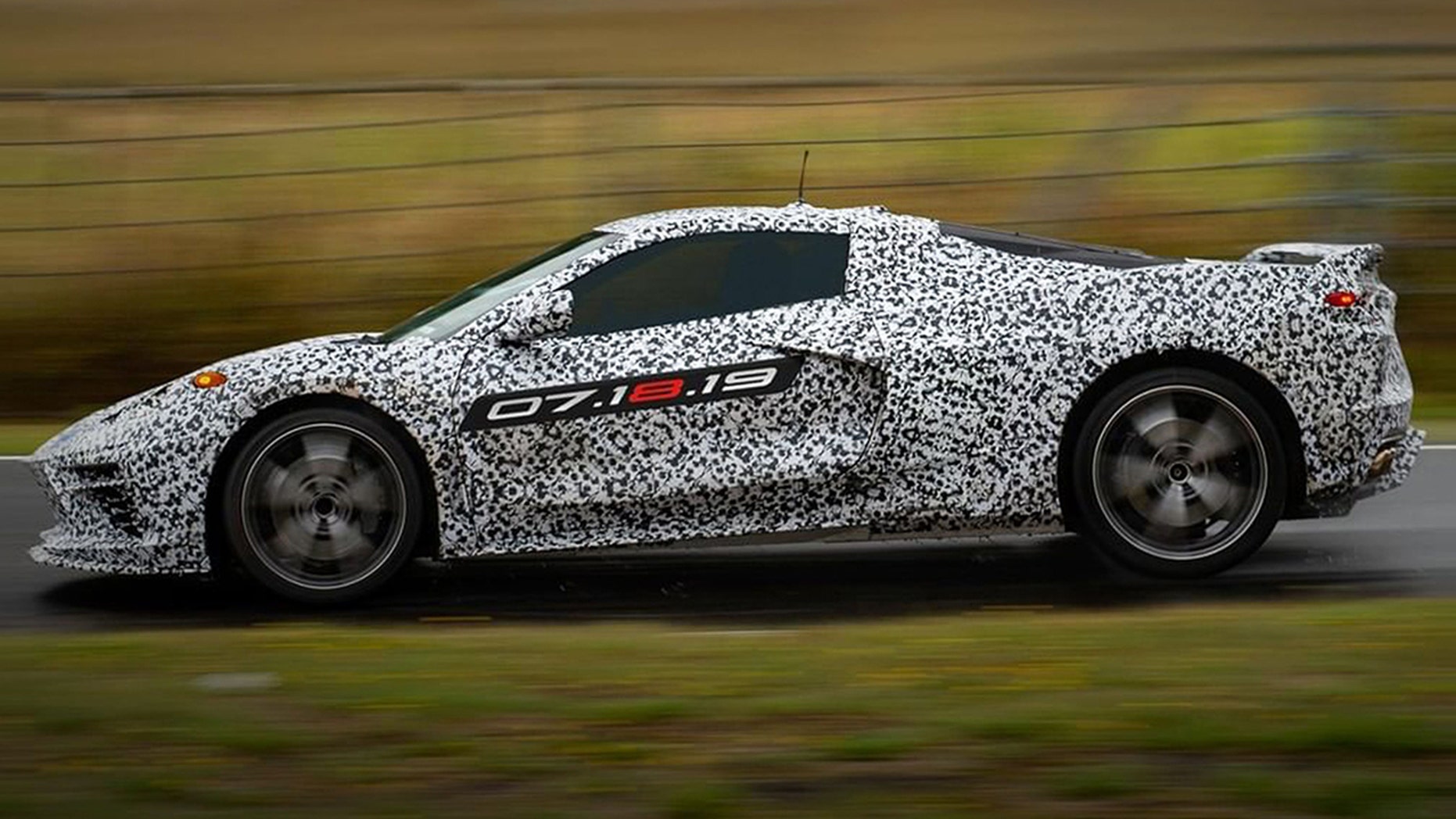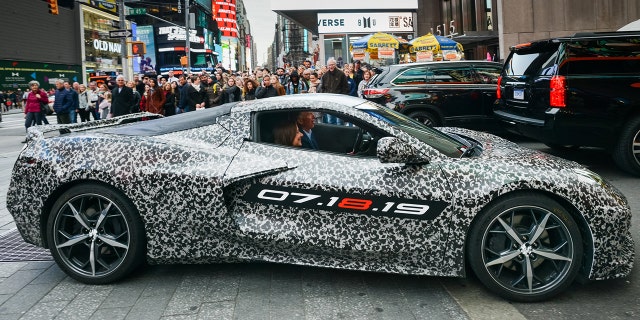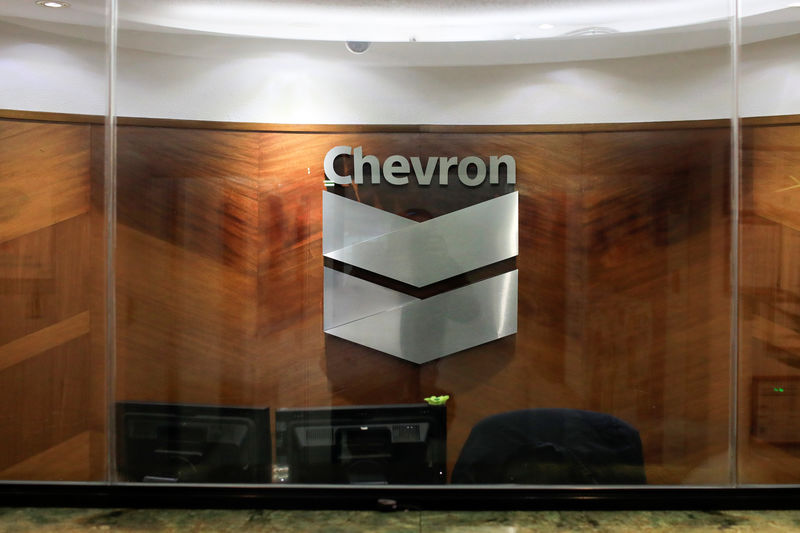SAN RAMON, Calif.--(BUSINESS WIRE)--Chevron Corporation (NYSE: CVX) announced today that it has entered into
a definitive agreement with Anadarko Petroleum Corporation (NYSE: APC)
to acquire all of the outstanding shares of Anadarko in a stock and cash
transaction valued at $33 billion, or $65 per share. Based on Chevron’s
closing price on April 11, 2019 and under the terms of the agreement,
Anadarko shareholders will receive 0.3869 shares of Chevron and $16.25
in cash for each Anadarko share. The total enterprise value of the
transaction is $50 billion.
The acquisition of Anadarko will significantly enhance Chevron’s already
advantaged Upstream portfolio and further strengthen its leading
positions in large, attractive shale, deepwater and natural gas resource
basins. Furthermore, Western Midstream Partners, LP (NYSE: WES) is a
successful midstream company whose assets are well aligned with the
combined companies’ upstream positions, which should further enhance
their economics and execution capabilities.
“This transaction builds strength on strength for Chevron,” said
Chevron’s Chairman and CEO Michael Wirth. “The combination of Anadarko’s
premier, high-quality assets with our advantaged portfolio strengthens
our leading position in the Permian, builds on our deepwater Gulf of
Mexico capabilities and will grow our LNG business. It creates
attractive growth opportunities in areas that play to Chevron’s
operational strengths and underscores our commitment to short-cycle,
higher-return investments.”
“This transaction will unlock significant value for shareholders,
generating anticipated annual run-rate synergies of approximately $2
billion, and will be accretive to free cash flow and earnings one year
after close,” Wirth concluded.
“The strategic combination of Chevron and Anadarko will form a stronger
and better company with world-class assets, people and opportunities,”
said Anadarko Chairman and CEO Al Walker. “I have tremendous respect for
Mike and his leadership team and believe Chevron’s strategy, scale and
operational capabilities will further accelerate the value of Anadarko’s
assets.”
Transaction Benefits
-
Strong Strategic Fit: Anadarko’s assets will enhance Chevron’s
portfolio across a diverse set of asset classes, including:
-
Shale & Tight – The combination of the two companies
will create a 75-mile-wide corridor across the most attractive
acreage in the Delaware basin, extending Chevron’s leading
position as a producer in the Permian.
-
Deepwater – The combination will enhance Chevron's existing
high-margin position in the deepwater Gulf of Mexico (GOM), where
it is already a leading producer, and extend its deepwater
infrastructure network.
-
LNG – Chevron will gain another world-class resource base
in Mozambique to support growing LNG demand. Area 1 is a very
cost-competitive and well-prepared greenfield project close to
major markets.
-
Significant Operating and Capital Synergies: The transaction is
expected to achieve run-rate cost synergies of $1 billion before tax
and capital spending reductions of $1 billion within a year of closing.
-
Accretive to Free Cash Flow and EPS: Chevron expects the
transaction to be accretive to free cash flow and earnings per share
one year after closing, at $60 Brent.
-
Opportunity to High-Grade Portfolio: Chevron plans to divest
$15 to $20 billion of assets between 2020 and 2022. The proceeds will
be used to further reduce debt and return additional cash to
shareholders.
-
Increased Shareholder Returns: As a result of higher expected
free cash flow, Chevron plans to increase its share repurchase rate
from $4 billion to $5 billion per year upon closing the transaction.
Transaction Details
The acquisition consideration is structured as 75 percent stock and 25
percent cash, providing an overall value of $65 per share based on the
closing price of Chevron stock on April 11, 2019. In aggregate, upon
closing of the transaction, Chevron will issue approximately 200 million
shares of stock and pay approximately $8 billion in cash. Chevron will
also assume estimated net debt of $15 billion. Total enterprise value of
$50 billion includes the assumption of net debt and book value of
non-controlling interest.
The transaction has been approved by the Boards of Directors of both
companies and is expected to close in the second half of the year. The
acquisition is subject to Anadarko shareholder approval. It is also
subject to regulatory approvals and other customary closing conditions.
Upon closing, the Company will continue be led by Michael Wirth as
Chairman and CEO. Chevron will remain headquartered in San Ramon,
California.
Advisors
Credit Suisse Securities (USA) LLC is acting as financial advisor to
Chevron. Paul, Weiss, Rifkind, Wharton & Garrison LLP is acting as legal
advisor to Chevron. Evercore and Goldman Sachs & Co. LLC are acting as
financial advisors to Anadarko. Wachtell, Lipton, Rosen & Katz and
Vinson & Elkins LLP are acting as legal advisors to Anadarko.
Conference Call
Chevron will conduct a conference call on Friday, April 12, 2019, at
8:30 a.m. ET to discuss the transaction.
A webcast of the discussion will be available in a listen-only mode to
individual investors, media, and other interested parties on Chevron’s
website at www.chevron.com
under the “Investors” section, or by calling Toll-Free U.S. +1
866-219-7734 or International +1 478-205-0666 and providing
the Conference ID 2864506. Additional materials will be available
under “Events and Presentations” in the “Investors” section on the
Chevron website.
About Chevron
Chevron Corporation is one of the world's leading integrated energy
companies. Through its subsidiaries that conduct business worldwide, the
company is involved in virtually every facet of the energy industry.
Chevron explores for, produces and transports crude oil and natural gas;
refines, markets and distributes transportation fuels and lubricants;
manufactures and sells petrochemicals and additives; generates power;
and develops and deploys technologies that enhance business value in
every aspect of the company's operations. Chevron is based in San Ramon,
Calif. More information about Chevron is available at www.chevron.com.
About Anadarko
Anadarko Petroleum Corporation’s mission is to deliver a competitive and
sustainable rate of return to shareholders by exploring for, acquiring
and developing oil and natural gas resources vital to the world’s health
and welfare. As of year-end 2018, the company had 1.47 billion
barrels-equivalent of proved reserves, making it one of the world’s
largest independent exploration and production companies. For more
information about Anadarko and APC Flash Feed updates, please visit www.anadarko.com.
As used in this news release, the term “Chevron” and such terms as
“the company,” “the corporation,” “our,” “we,” “us” and “its” may refer
to Chevron Corporation, one or more of its consolidated subsidiaries, or
to all of them taken as a whole. All of these terms are used for
convenience only and are not intended as a precise description of any of
the separate companies, each of which manages its own affairs.
Cautionary Statement Regarding Forward-Looking Statements
This communication contains forward-looking statements within the
meaning of the Private Securities Litigation Reform Act of 1995, Section
27A of the Securities Act of 1933, as amended, and Section 21E of the
Securities Exchange Act of 1934, as amended. These forward-looking
statements generally include statements regarding the potential
transaction between Chevron Corporation (“Chevron”)
and Anadarko Petroleum Corporation (“Anadarko”),
including any statements regarding the expected timetable for completing
the potential transaction, the ability to complete the potential
transaction, the expected benefits of the potential transaction
(including anticipated annual operating cost and capital synergies and
anticipated free cash flow accretion), the increase of Chevron’s share
repurchase annual target, projected financial information, future
opportunities, and any other statements regarding Chevron’s and
Anadarko’s future expectations, beliefs, plans, objectives, results of
operations, financial condition and cash flows, or future events or
performance. These statements are often, but not always, made through
the use of words or phrases such as “anticipates,” “expects,” “intends,”
“plans,” “targets,” “forecasts,” “projects,” “believes,” “seeks,”
“schedules,” “estimates,” “positions,” “pursues,” “may,” “could,”
“should,” “will,” “budgets,” “outlook,” “trends,” “guidance,” “focus,”
“on schedule,” “on track,” “is slated,” “goals,” “objectives,”
“strategies,” “opportunities,” “poised” and similar expressions. All
such forward-looking statements are based on current expectations of
Chevron’s and Anadarko’s management and therefore involve estimates and
assumptions that are subject to risks, uncertainties and other factors
that could cause actual results to differ materially from the results
expressed in the statements. Key factors that could cause actual results
to differ materially from those projected in the forward-looking
statements include the ability to obtain the requisite Anadarko
stockholder approval; uncertainties as to the timing to consummate the
potential transaction; the risk that a condition to closing the
potential transaction may not be satisfied; the risk that regulatory
approvals are not obtained or are obtained subject to conditions that
are not anticipated by the parties; the effects of disruption to
Chevron’s or Anadarko’s respective businesses; the effect of this
communication on Chevron’s or Anadarko’s stock prices; the effects of
industry, market, economic, political or regulatory conditions outside
of Chevron’s or Anadarko’s control; transaction costs; Chevron’s ability
to achieve the benefits from the proposed transaction, including the
anticipated annual operating cost and capital synergies; Chevron’s
ability to promptly, efficiently and effectively integrate acquired
operations into its own operations; unknown liabilities; and the
diversion of management time on transaction-related issues. Other
important factors that could cause actual results to differ materially
from those in the forward-looking statements are: changing crude oil and
natural gas prices; changing refining, marketing and chemicals margins;
Chevron's ability to realize anticipated cost savings and expenditure
reductions; actions of competitors or regulators; timing of exploration
expenses; timing of crude oil liftings; the competitiveness of
alternate-energy sources or product substitutes; technological
developments; the results of operations and financial condition of
Chevron's suppliers, vendors, partners and equity affiliates,
particularly during extended periods of low prices for crude oil and
natural gas; the inability or failure of Chevron’s joint-venture
partners to fund their share of operations and development activities;
the potential failure to achieve expected net production from existing
and future crude oil and natural gas development projects; potential
delays in the development, construction or start-up of planned projects;
the potential disruption or interruption of Chevron’s operations due to
war, accidents, political events, civil unrest, severe weather, cyber
threats and terrorist acts, crude oil production quotas or other actions
that might be imposed by the Organization of Petroleum Exporting
Countries, or other natural or human causes beyond Chevron’s control;
changing economic, regulatory and political environments in the various
countries in which Chevron operates; general domestic and international
economic and political conditions; the potential liability for remedial
actions or assessments under existing or future environmental
regulations and litigation; significant operational, investment or
product changes required by existing or future environmental statutes
and regulations, including international agreements and national or
regional legislation and regulatory measures to limit or reduce
greenhouse gas emissions; the potential liability resulting from other
pending or future litigation; Chevron’s future acquisition or
disposition of assets or shares or the delay or failure of such
transactions to close based on required closing conditions; the
potential for gains and losses from asset dispositions or impairments;
government-mandated sales, divestitures, recapitalizations,
industry-specific taxes, tariffs, sanctions, changes in fiscal terms or
restrictions on scope of company operations; foreign currency movements
compared with the U.S. dollar; material reductions in corporate
liquidity and access to debt markets; the effects of changed accounting
rules under generally accepted accounting principles promulgated by
rule-setting bodies; Chevron's ability to identify and mitigate the
risks and hazards inherent in operating in the global energy industry;
and the factors set forth under the heading “Risk Factors” on pages 18
through 21 of Chevron’s 2018 Annual Report on Form 10-K. Other
unpredictable or unknown factors not discussed in this communication
could also have material adverse effects on forward-looking statements.
Chevron assumes no obligation to update any forward-looking statements,
except as required by law. Readers are cautioned not to place undue
reliance on these forward-looking statements that speak only as of the
date hereof.
Important Information For Investors And Stockholders
This communication does not constitute an offer to sell or the
solicitation of an offer to buy any securities or a solicitation of any
vote or approval, nor shall there be any sale of securities in any
jurisdiction in which such offer, solicitation or sale would be unlawful
prior to registration or qualification under the securities laws of any
such jurisdiction. No offer of securities shall be made except by means
of a prospectus meeting the requirements of Section 10 of the Securities
Act of 1933, as amended. In connection with the potential transaction,
Chevron expects to file a registration statement on Form S-4 with the
Securities and Exchange Commission (“SEC”)
containing a preliminary prospectus of Chevron that also constitutes a
preliminary proxy statement of Anadarko. After the registration
statement is declared effective Anadarko will mail a definitive proxy
statement/prospectus to stockholders of Anadarko. This communication is
not a substitute for the proxy statement/prospectus or registration
statement or for any other document that Chevron or Anadarko may file
with the SEC and send to Anadarko’s stockholders in connection with the
potential transaction. INVESTORS AND SECURITY HOLDERS OF CHEVRON AND
ANADARKO ARE URGED TO READ THE PROXY STATEMENT/PROSPECTUS AND OTHER
DOCUMENTS FILED WITH THE SEC CAREFULLY AND IN THEIR ENTIRETY WHEN THEY
BECOME AVAILABLE BECAUSE THEY WILL CONTAIN IMPORTANT INFORMATION.
Investors and security holders will be able to obtain free copies of the
proxy statement/prospectus (when available) and other documents filed
with the SEC by Chevron or Anadarko through the website maintained by
the SEC at http://www.sec.gov.
Copies of the documents filed with the SEC by Chevron will be available
free of charge on Chevron’s website at http://www.chevron.com/investors
and copies of the documents filed with the SEC by Anadarko will be
available free of charge on Anadarko’s website at http://investors.anadarko.com.
Chevron and Anadarko and certain of their respective directors,
certain of their respective executive officers and other members of
management and employees may be considered participants in the
solicitation of proxies with respect to the potential transaction under
the rules of the SEC. Information about the directors and executive
officers of Chevron is set forth in its Annual Report on Form 10-K for
the year ended December 31, 2018, which was filed with the SEC on
February 22, 2019, and its proxy statement for its 2019 annual meeting
of stockholders, which Chevron expects to be filed with the SEC on April
15, 2019. Information about the directors and executive officers of
Anadarko is set forth in its Annual Report on Form 10-K for the year
ended December 31, 2018, which was filed with the SEC on February 14,
2019, and its proxy statement for its 2019 annual meeting of
stockholders, which was filed with the SEC on March 29, 2019. These
documents can be obtained free of charge from the sources indicated
above. Additional information regarding the interests of such
participants in the solicitation of proxies in respect of the potential
transaction will be included in the registration statement and proxy
statement/prospectus and other relevant materials to be filed with the
SEC when they become available.

Let's block ads! (Why?)
https://www.businesswire.com/news/home/20190412005132/en/Chevron-Announces-Agreement-Acquire-Anadarko
2019-04-12 10:00:00Z
52780267132091
 Uber CEO Dara Khosrowshahi.Reuters
Uber CEO Dara Khosrowshahi.Reuters Jay Ritter
Jay Ritter






